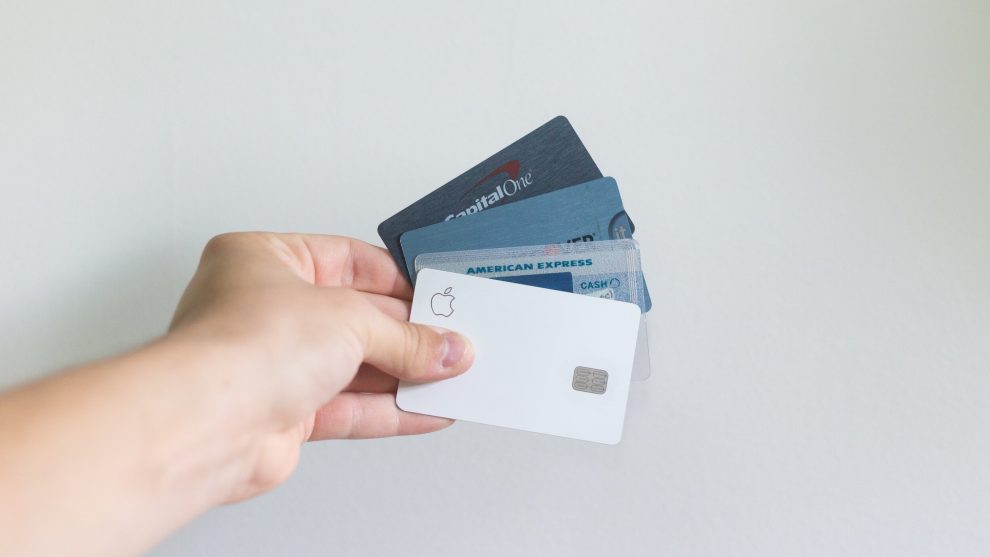Are you ready to take your financial life to the next level? Opening a credit card account can be a game-changer, unlocking a world of benefits like building credit, earning rewards on everyday purchases, and giving you more flexibility and security than carrying cash. But with so many card options out there and a daunting application process, where do you even begin?
Fear not, intrepid credit seeker! Our ultimate guide to opening a credit card account in 2023 will walk you through every step, from checking your credit worthiness to choosing your perfect card to submitting your application and beyond. By the end of this article, you’ll be armed with the knowledge and confidence you need to open a credit card account and start using it to your advantage. Let’s dive in!
Step 1: Know Where You Stand with Your Credit
Before you even think about which credit card to apply for, it’s crucial to have a clear understanding of your credit situation. Your credit score and credit report are the key factors that will determine what cards you’re likely to qualify for and at what terms.
Your credit score is a three-digit number that represents your overall credit risk to lenders. It’s based on the information in your credit report, which is a detailed record of your credit usage and payment history. A higher credit score means you’re seen as a lower-risk borrower, which can open the door to better credit card options with lower interest rates, higher credit limits, and more attractive rewards.
So how do you find out your credit score and what’s in your credit report? You actually have multiple credit scores, as the three major credit bureaus (Experian, Equifax, and TransUnion) each have their own proprietary scoring models. But for a general sense of where you stand, you can use a free credit-scoring service like Credit Karma, Credit Sesame, or NerdWallet to see an approximation of your score.
You’re also entitled to a free credit report from each bureau once per year, which you can request at AnnualCreditReport.com. Reviewing your credit reports is a smart habit to get into, as it allows you to check for any inaccuracies or signs of fraud that could be dragging your score down. If you do find errors, you can dispute them with the appropriate credit bureau to potentially boost your score.
Step 2: Determine What Kind of Credit Card You Need
Now that you know where you stand with your credit, it’s time to start thinking about what you actually want out of a credit card. The truth is, there is no one-size-fits-all “best” credit card out there. The right card for you will depend on your specific needs, preferences and spending habits.
Some common types of credit cards include:
- Cash back cards: These cards earn you a percentage back on every purchase you make, typically 1–5%. Some offer a flat rate on everything, while others have bonus categories that earn a higher rate.
- Travel rewards cards: If you’re a frequent flyer, these cards can help you rack up points or miles to put toward free flights, hotel stays, and other travel perks. Some also offer additional benefits like travel insurance, airport lounge access, and credits for TSA Precheck and Global Entry fees.
- Balance transfer cards: carrying a balance on a high-interest credit card? These cards can help you pay down debt faster by allowing you to transfer your balance to a new card with a 0% introductory APR period, often for 12–18 months.
- Student cards—just starting out with credit? Student credit cards are designed for college students looking to build credit, often with lower credit limits and less strict qualification requirements.
- Secured cards: For those with bad credit or no credit, secured credit cards can be a stepping stone to building a positive payment history. They require a cash security deposit that serves as your credit line.
Think about what features are most important to you in a credit card and let that guide your search. Do you want to earn rewards for your everyday spending? Are you looking for a card with no annual fee? Do you need a card that’s accepted worldwide for international travel? Knowing your priorities will help you narrow down your options.
Step 3: Research and Compare Credit Card Offers
Once you have a sense of what type of card you’re looking for, it’s time to start comparing specific offers. A good place to start is with your existing bank or credit union, as they may have credit card options with appealing incentives for current customers. You can also browse credit card comparison sites like The Points Guy, NerdWallet, and CreditCards.com to see a wide range of options and easily compare key details.
As you compare different credit card offers, pay close attention to the following factors:
- Rewards structure: If you’re looking at rewards credit cards, make sure you understand how you earn points, miles, or cash back and what those rewards are worth when you redeem them. Look for a card that offers bonus rewards in categories you spend a lot on.
- Sign-up bonus: Many cards offer a generous bonus of points, miles, or cash when you’re first approved and meet a minimum spending requirement, which can be a great way to jumpstart your rewards. Compare current offers to make sure you’re getting a competitive bonus.
- Annual fee: Some credit cards charge an annual fee, typically ranging from $95 to $550 for high-end travel cards. Consider whether the rewards and perks you’ll get from the card outweigh the cost of the annual fee. There are also plenty of great no-annual fee options if you don’t want that added expense.
- APR: If you think you may carry a balance on your credit card, pay close attention to the APR (annual percentage rate). This is the interest rate you’ll be charged on your outstanding balance if you don’t pay in full each month. Look for a card with a low ongoing APR or a 0% introductory APR if you need some time to pay off a large purchase or balance transfer.
- Foreign transaction fees: If you plan to use your credit card abroad, look for one that doesn’t charge foreign transaction fees, which are typically around 3% of each purchase made outside the U.S. Most travel rewards cards waive these fees.
- Additional benefits: Many credit cards come with additional perks beyond just rewards, such as purchase protection, extended warranty coverage, rental car insurance, roadside assistance, and more. Factor these benefits into your decision, especially if they can save you money on things you’d otherwise pay for separately.

Step 4: Check for Pre-Qualified Offers
Before you officially apply for a credit card, it’s a good idea to check if you have any pre-qualified offers available. Pre-qualification is a way for credit card issuers to do a soft pull on your credit (which won’t affect your credit score) to see if you’re likely to be approved for certain cards.
Many issuers have a pre-qualification tool on their website where you can input some basic information and see what cards you may be eligible for. This can give you a sense of your approval odds without having to submit a formal application and incur a hard inquiry on your credit report.
Keep in mind that pre-qualification is not a guarantee of approval. You’ll still need to submit an official application and go through the normal underwriting process. But it can be a useful way to narrow down your options and avoid applying for cards you’re unlikely to qualify for.
Step 5: Apply for Your Chosen Credit Card
Once you’ve settled on the credit card you want to apply for, it’s time to submit your application. Most credit card applications can be completed online in a matter of minutes, but you can also apply by phone, by mail, or in person at a bank branch.
When you fill out the application, you’ll need to provide some key personal and financial details, including:
- Name
- Address
- Date of birth
- Social security number
- Email address and phone number
- Employment status and income
- Monthly housing payment
Be sure to fill out the application as accurately and completely as possible. Issuers use this information to verify your identity and assess your creditworthiness, so any discrepancies or omissions could lead to your application being delayed or denied.
It’s also important to read through the terms and conditions carefully before submitting your application. Make sure you understand the card’s fees, interest rates, and rewards program rules. If anything is unclear, don’t hesitate to contact the issuer directly for clarification.
Step 6: Wait for a Decision (and Follow Up if Needed)
After you submit your credit card application, the waiting game begins. In some cases, you may receive an instant decision on your approval. But if the issuer needs more time to review your application, it could take anywhere from a few days to a few weeks to hear back.
If you’re approved, congratulations! You’ll receive your new credit card in the mail within 7–10 business days in most cases. Be sure to activate your card as soon as you receive it by following the instructions provided.
If you’re denied, don’t be discouraged. It’s not uncommon to be turned down for a credit card, especially if you’re new to credit or have some blemishes on your credit report. The issuer is required to send you an adverse action notice explaining the main reasons why your application was denied.
Review the reasons provided and see if there are any steps you can take to address them. For example, if you were denied due to a low credit score, you may need to spend some time building up your credit with a secured card or credit-builder loan before applying again. If you were denied due to incomplete or inaccurate information on your application, reach out to the issuer and ask if you can provide additional documentation or clarify any issues.
Step 7: Start Using Your Card Responsibly
Once you have your new credit card in hand, it’s important to use it responsibly from the start. Here are some best practices to keep in mind:
- Pay your bill on time and in full each month to avoid interest charges and late fees. Set up automatic payments if possible so you never miss a due date.
- Keep your credit utilization low by using only a small portion of your available credit limit. A good rule of thumb is to keep your balance below 30% of your limit at all times.
- Monitor your account regularly for any signs of fraud or unauthorized charges. If you spot anything suspicious, report it to your issuer right away.
- Take advantage of your card’s rewards and benefits, but don’t overspend just to earn more points or cash back. Stick to your normal spending habits and budget.
- If you do need to carry a balance, have a plan to pay it off as quickly as possible to minimize interest charges. Consider using a balance transfer card with a 0% intro APR to give yourself some breathing room.
Opening a Credit Card Account FAQs
Still have questions about opening a credit card account? Here are some common ones we hear from readers:
How long does it take to get approved for a credit card?
The approval process can vary depending on the issuer and your individual creditworthiness. In some cases, you may receive an instant decision when you apply online. In others, it could take a few days to a few weeks to hear back. If you haven’t received a decision within 7–10 business days, it’s a good idea to follow up with the issuer directly.
What credit score do I need to get approved for a credit card?
There is no one specific credit score you need for approval, as each issuer has its own underwriting criteria. In general, though, most unsecured credit cards require at least a fair credit score (580+) for approval. If your score is lower than that, you may need to start with a secured card or become an authorized user on someone else’s account to build up your credit first.
How many credit cards should I have?
There is no magic number of credit cards everyone should have. It depends on your individual financial needs and goals. Some people prefer to keep things simple with just one or two go-to cards, while others like to maximize rewards by juggling multiple cards for different spending categories. The most important thing is to only take on as much credit as you can responsibly manage.
Will opening a new credit card hurt my credit score?
In the short term, applying for a new credit card can cause a slight dip in your credit score due to the hard inquiry on your credit report. However, this impact is usually minimal and temporary. In the long run, responsibly using a new credit card can actually help improve your credit score by increasing your available credit and building up a positive payment history.
The Bottom Line: Opening a Credit Card Account in 2023
Opening a credit card account can be a smart financial move if done responsibly. By taking the time to check your credit, research your options, and apply strategically, you can find a card that fits your needs and helps you build a strong credit profile over time.
Remember, your credit is a powerful tool that can open doors to better financial opportunities down the road. By starting your credit journey on the right foot with a well-chosen credit card, you’ll be setting yourself up for success in 2023 and beyond.
















Add Comment